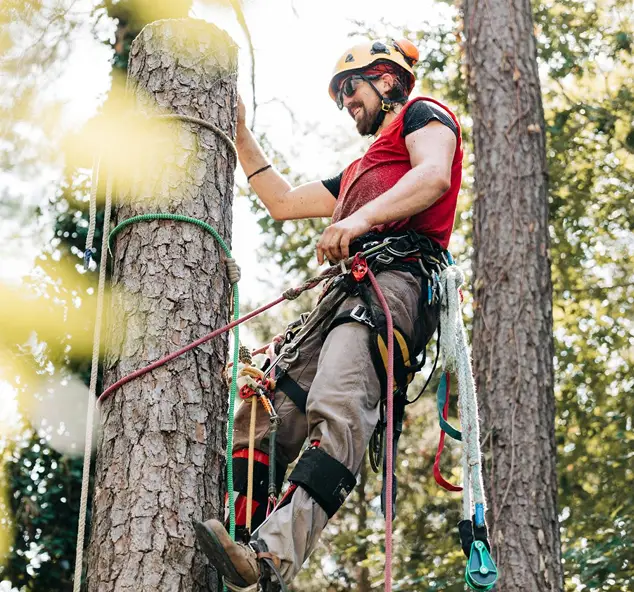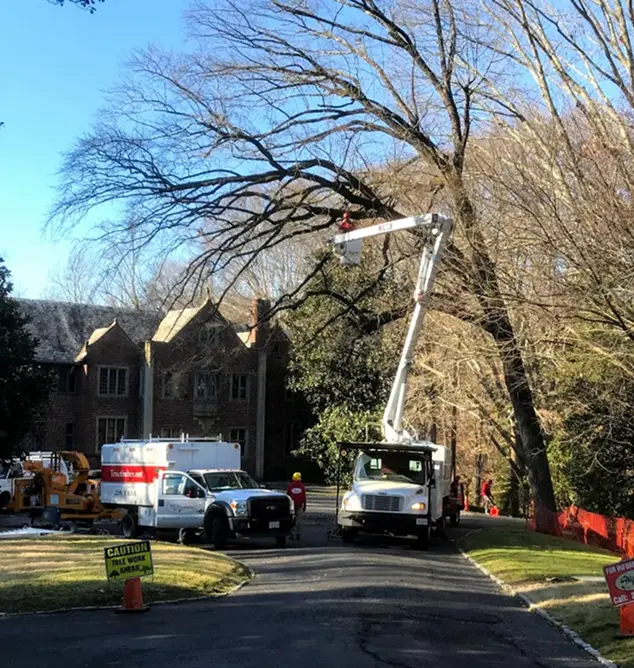
In many cases some combination of cabling, bracing, and pruning makes an otherwise structurally defective tree safe enough to remain standing.
We are tree people at Truetimber, but more significantly we are people who try to understand our neighbors and their needs.
As trees grow, they often develop areas of weakness or structural defects. In a wild setting, these aren’t typically a concern. But in urban environments, these weaknesses can pose serious risks to people and property—and need to be managed.
Most tree issues can be prevented early with proper pruning. But for mature trees, arborists may recommend supplemental support. Below are two common issues we see nearly every day—and how we handle them.
Our sound advice and pursuit of the safe and mutually beneficial way for people and trees to live together are two of the reasons Richmonders value Truetimber’s tree management solutions.

Co-Dominant Stems
This is one of the most frequent problems we encounter. A co-dominant stem occurs when two stems grow upward together without a strong connection to each other. They’re usually easy to spot by the deep “V”-shaped union between them. Because of the poor attachment, these stems are far more likely to split from the tree.

Over-Extended Limbs
These are limbs that have grown disproportionately long compared to the rest of the tree. They often grow horizontally or downward, with most of their weight concentrated at the end. These limbs are particularly vulnerable to breakage from wind, ice, or snow.

It’s important to understand that supplemental support systems are not foolproof. Hardware is installed to reduce the risk of failure—not eliminate it. Still, these systems are valuable tools for extending the life and safety of mature trees.
If you’re concerned about a tree on your property, one of our certified arborists can help you evaluate the situation and choose the best path forward.
Whether you’ve noticed a concerning split in a beloved oak or want professional advice on keeping a heritage tree standing, Truetimber Arborists are here to help. From the first inspection to final installation, we’ll walk you through the entire process with fairness, hard work, and a commitment to the best outcome for you and your landscape.
Schedule a consultation today and let Truetimber help secure your trees for years to come. Discover why so many Richmonders trust us to help people and trees coexist—safely and beautifully.
As mentioned earlier, early pruning is incredibly effective for long-term tree health. Even with mature trees, reducing weight on problematic limbs can ease strain on weak attachment points. But when pruning alone isn’t enough, supplemental support may be recommended.
Here are three common systems arborists use:
Cables are a popular solution for co-dominant stems. They’re installed between stems to reduce movement and relieve stress on the weak union.
There are two types of cables:
Choosing between static and dynamic depends on several factors, including tree size, species, location, and growth patterns. Your arborist will make a recommendation based on these details.
Brace rods are less common but incredibly effective in the right scenario. These galvanized steel rods are drilled through a weak union—especially one that’s long or already cracking—to help “stitch” it together. If brace rods are installed, they’re almost always paired with support cables for additional strength.
The simplest form of support. Props are physical supports—think of them like crutches—that hold up low, over-extended branches or small leaning trees. They help reduce strain on the branch attachment by bearing some of the limb’s weight.